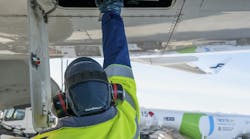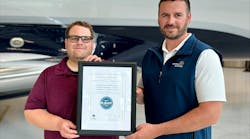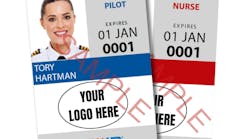Key leaders in the business aviation community’s mission to achieve net-zero carbon emissions by 2050 took center stage at a May 2 Washington aviation policy forum to detail the sector’s comprehensive focus on sustainability, in a panel discussion moderated by National Business Aviation Association (NBAA) President and CEO Ed Bolen.
“Business aviation is an incubator for game-changing technologies that point the way to a net-zero future,” Bolen said in opening the panel. “We didn’t just announce that we were going to be net zero by 2050 – we’ve made huge investments, and we’re moving forward on multiple pathways.”
The panelists for the luncheon session hosted by the Aero Club of Washington included Michael Amalfitano, president and CEO of Embraer Executive Jets; Scott Lewis, president of World Energy Supply Zero; and Billy Nolen, chief regulatory affairs officer at Archer and former acting Federal Aviation Administration administrator.
The panel, titled “On a Mission to Net Zero,” was held as part of the industry’s CLIMBING. FAST. advocacy initiative, which emphasizes business aviation’s many societal benefits, including the sector’s sustainability leadership.
For example, thanks to investments in a host of innovative technologies, emissions from business aircraft have been slashed by 40 percent in just four decades, and new business aircraft are up to 35 percent more efficient than the previous generation.
The industry’s march toward net-zero continues with a holistic approach to carbon reduction, including increased production of Sustainable Aviation Fuel (SAF), which can reduce aviation lifecycle greenhouse gas emissions by as much as 80 percent; the development of eco-friendly aircraft that use hybrid, electric and hydrogen-powered propulsion systems; the use of more efficient routes that require less energy; the implementation of sustainability best practices to minimize airports’ environmental impact; and myriad other innovations.
Amalfitano pointed to the real-world examples of sustainability innovation outlined in the CLIMBING. FAST. campaign, including Embraer’s continually increasing use of SAF in its aircraft, the company’s investment in electric and hybrid-electric aircraft, and its focus on designing aircraft interiors with recycled plastics and other sustainable materials. “Embraer is a big part of the industry’s sustainability ecosystem, not only for today, but for the future of air mobility,” Amalfitano said.
Lewis said his company’s California facility continues to scale up its SAF production. Currently, it produces about 1,000 barrels of SAF a day, with plans to increase to 20,000 barrels per day, with a goal of implementing a net-zero production process. The company also is looking to stand up a second facility in Houston, TX, to likewise produce 20,000 barrels a day. “We believe the best way to mitigate carbon is to leave petroleum safely sequestered underground,” Lewis said. “Our goal is to have over 1 billion gallons of SAF production by 2030.”
Nolen said Archer is preparing to enter its zero-emission electric vertical takeoff and landing aircraft – Midnight, a piloted, four-person vehicle – into service as early as next year. The Georgia-based production facility for the vehicle is expected to eventually produce more than 2,000 aircraft per year and create more than 1,000 jobs. “For the first time, we are at the point where this new technology in electric vertical takeoff and landing aircraft is becoming a reality,” he said. “Of course, we’re not just creating the future of flight – we’re creating a whole new, highly skilled workforce. That’s good news for America’s leadership in aviation, and good news for those seeking a future in an aviation profession. This is an exciting time – there’s work to be done, but we’re well on the way.”
Bolen said the discussion underscored the demonstrable strides being made by the industry, on the ground and in the air, to achieve its net-zero aims. “We’ve come a long way, but we are accelerating to get where we’re going,” he said. “We are climbing fast toward a future in which business aviation is safer, more efficient and more sustainable than ever.”
More on Sustainability
AviationPros Podcast: Sustainable Ground Operations in Scandinavia
AviationPros Podcast: INFORM's Green Optimization Initiative
How Ground Handlers are Contributing to Aviation’s Sustainability
Ground Support’s Progress with Sustainability Goals
TIACA’s Pursuit of Sustainability
Ground Handlers’ Green Plans
Success with ESG
What is SAF?




